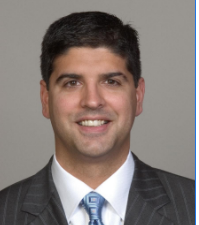

Less than two weeks ago, the U.S. Supreme Court narrowly upheld the healthcare worker vaccine mandate proposed by the Centers for Medicare & Medicaid Services. By the narrowest possible vote — 5-4 — the High Court said that providers taking part in the Medicare or Medicaid programs need to follow the CMS edict.
What many may have missed from the highly covered proceedings, however, is the utter drama that unfolded between the justices and their writings.
There were two glaring dissents supported by the conservative side of the Court, one written by Justice Clarence Thomas and the other written by Justice Samuel Alito Jr. Justices Neil Gorsuch and Amy Coney Barrett joined in favor of halting the CMS vaccine mandate. The opinions highlight the tension at the nation’s highest court, and the very different views on the COVID-19 vaccine mandate.
Upon reading through the text of the opinions, and the legalese, the basic question is quite simple. Do you favor doing what is best for the health and safety of patients? Or do you favor big government not telling you what to do? Health and safety won out.
Interestingly, the dissent did not question the validity or efficacy of the vaccine. Rather, the two sides of the Court battled over whether CMS has the authority to issue the vaccine mandate.
Significantly, the majority wrote:
“Congress has authorized the Secretary to impose conditions on the receipt of Medicaid and Medicare funds that the Secretary finds necessary in the interest of the health and safety of individuals who are furnished services.. . . COVID-19 is a highly contagious, dangerous, and — especially for Medicare and Medicaid patients — deadly disease. The Secretary of Health and Human Services determined that a COVID-19 vaccine mandate will substantially reduce the likelihood that healthcare workers will contract the virus and transmit it to their patients. . . He accordingly concluded that a vaccine mandate is ‘necessary to promote and protect patient health and safety’ in the face of the ongoing pandemic.
“The rule thus fits neatly within the language of the statute. After all, ensuring that providers take steps to avoid transmitting a dangerous virus to their patients is consistent with the fundamental principle of the medical profession: first, do no harm. It would be the ‘very opposite of efficient and effective administration for a facility that is supposed to make people well to make them sick with COVID–19.’”
Arguments about validity add to the drama
So the majority took the position that the CMS mission is to take action that promotes the health and safety of Medicare and Medicaid beneficiaries. Citing a list of COVID-19 data and the effectiveness of the vaccine, the Court sided with the idea that COVID-19 vaccines are important to protect the health and safety of patients.
As for the authority of CMS to promulgate the rule, the Court interestingly focused on oral arguments in which opposing counsel answered in open court that it was OK for CMS to require gloves and sterile procedures under its long-established rules for healthcare providers. The Court felt that was an admission that the vaccine is in the same category as other infection control policies promulgated by CMS:
“Indeed, respondents do not contest the validity of this longstanding litany of health-related participation conditions. When asked at oral argument whether the Secretary could, using the very same statutory authorities at issue here, require hospital employees to wear gloves, sterilize instruments, wash their hands in a certain way and at certain intervals, and the like, Missouri answered yes: ‘[T]he Secretary certainly has authority to implement all kinds of infection control measures at these facilities.’ Tr. of Oral Arg.57–58. Of course the vaccine mandate goes further than what the Secretary has done in the past to implement infection control. But he has never had to address an infection problem of this scale and scope before. In any event, there can be no doubt that addressing infection problems in Medicare and Medicaid facilities is what he does. “
To add to the Supreme Court drama, the majority ran through the history of vaccine mandates in our country as further support for upholding the mandate:
“And his [the Secretary’s] response [of imposing the vaccine mandate] is not a surprising one. Vaccination requirements are a common feature of the provision of healthcare in America: Healthcare workers around the country are ordinarily required to be vaccinated for diseases such as hepatitis B, influenza, and measles, mumps, and rubella. CDC, State Healthcare Worker and Patient Vaccination Laws (Feb. 28, 2018), https://www.cdc.gov/phlp/publications/topic/vaccinationlaws.html. As the Secretary explained, these pre-existing state requirements are a major reason the agency has not previously adopted vaccine mandates as a condition of participation. 86 Fed. Reg.61567–61568.”
Justice Thomas went the other way. He claimed the authority for CMS to promulgate rules only extends to rules that are administrative in nature.
“Rather, these subsections show that HHS’ residual authority embraces only administrative requirements like those that precede it — including “provid[ing] 24-hour nursing service,” “maintain[ing] clinical records on all patients,” or having “bylaws in effect.” §§1395x(e)(2), (3), (5). A requirement that all healthcare workers be vaccinated is plainly different in kind.”
Biases revealed in dramatic dissents
Justice Thomas and the dissenting justices go on to clearly show his and their definite bias, as he identifies the vaccine himself as being “unwanted”:
“Here, the omnibus rule compels millions of healthcare workers to undergo an unwanted medical procedure that ‘cannot be removed at the end of the shift,’ In re MCP No. 165, 20 F. 4th 264, 268 (CA6 2021) (Sutton, C. J., dissenting from denial of initial hearing en banc). To the extent the rule has any connection to the management of Medicare and Medicaid, it is at most a ‘tangential’ one. (emphasis added).”
In case that was not enough disagreement for you, Justice Alito wrote a separate dissent. He called out the procedural irregularities of CMS imposing the rule, without the opportunity for public comment:
“Today’s decision will ripple through administrative agencies’ future decision making. The Executive Branch already touches nearly every aspect of Americans’ lives. In concluding that CMS had good cause to avoid notice-and-comment rulemaking, the Court shifts the presumption against compliance with procedural strictures from the unelected agency to the people they regulate. Neither CMS nor the Court articulates a limiting principle for why, after an unexplained and unjustified delay, an agency can regulate first and listen later, and then put more than 10 million healthcare workers to the choice of their jobs or an irreversible medical treatment. “
The drama played itself out further, with the majority taking shots at the dissenting opinions, almost ridiculing their position. In one portion of the majority opinion, the Court said that if healthcare providers don’t like the COVID-19 vaccine mandate, then they are free to cancel their participation in the Medicare and Medicaid programs. Kind of like saying, “If you don’t like it, then leave.” Here it is:
“The States and JUSTICE THOMAS offer a narrower view of the various authorities at issue, contending that the seemingly broad language cited above authorizes the Secretary to impose no more than a list of bureaucratic rules regarding the technical administration of Medicare and Medicaid. But the longstanding practice of Health and Human Services in implementing the relevant statutory authorities tells a different story. As noted above, healthcare facilities that wish to participate in Medicare and Medicaid have always been obligated to satisfy a host of conditions that address the safe and effective provision of healthcare, not simply sound accounting….
“We accordingly conclude that the Secretary did not exceed his statutory authority in requiring that, in order to remain eligible for Medicare and Medicaid dollars, the facilities covered by the interim rule must ensure that their employees be vaccinated against COVID-19.”
Reasonable rules or lack of authority?
So there you have it. Do you support the government making “reasonable” rules as a condition of participation in the Medicare or Medicaid programs, or do you call the government requiring vaccine mandates more than a mere infection-control procedure that steps outside the bounds of its authority? Whatever your position, the drama unfolding within the Supreme Court shows two diametrically opposite views, seemingly grounded in the answers to these basic questions.
We need to remember that the decision only removed the stay on the vaccine mandate and will allow the parties to continue to litigate the underlying issues while CMS puts the mandate into play.
That said, while legal wrangling may continue, it is likely that this decision of the Supreme Court has signaled that any further challenges to the CMS vaccine mandate will likely not be successful.
Neville M. Bilimoria is a partner in the Chicago office of the Health Law Practice Group and member of the Post-Acute Care And Senior Services Subgroup at Duane Morris LLP; [email protected].
The opinions expressed in McKnight’s Long-Term Care News guest submissions are the author’s and are not necessarily those of McKnight’s Long-Term Care News or its editors.





